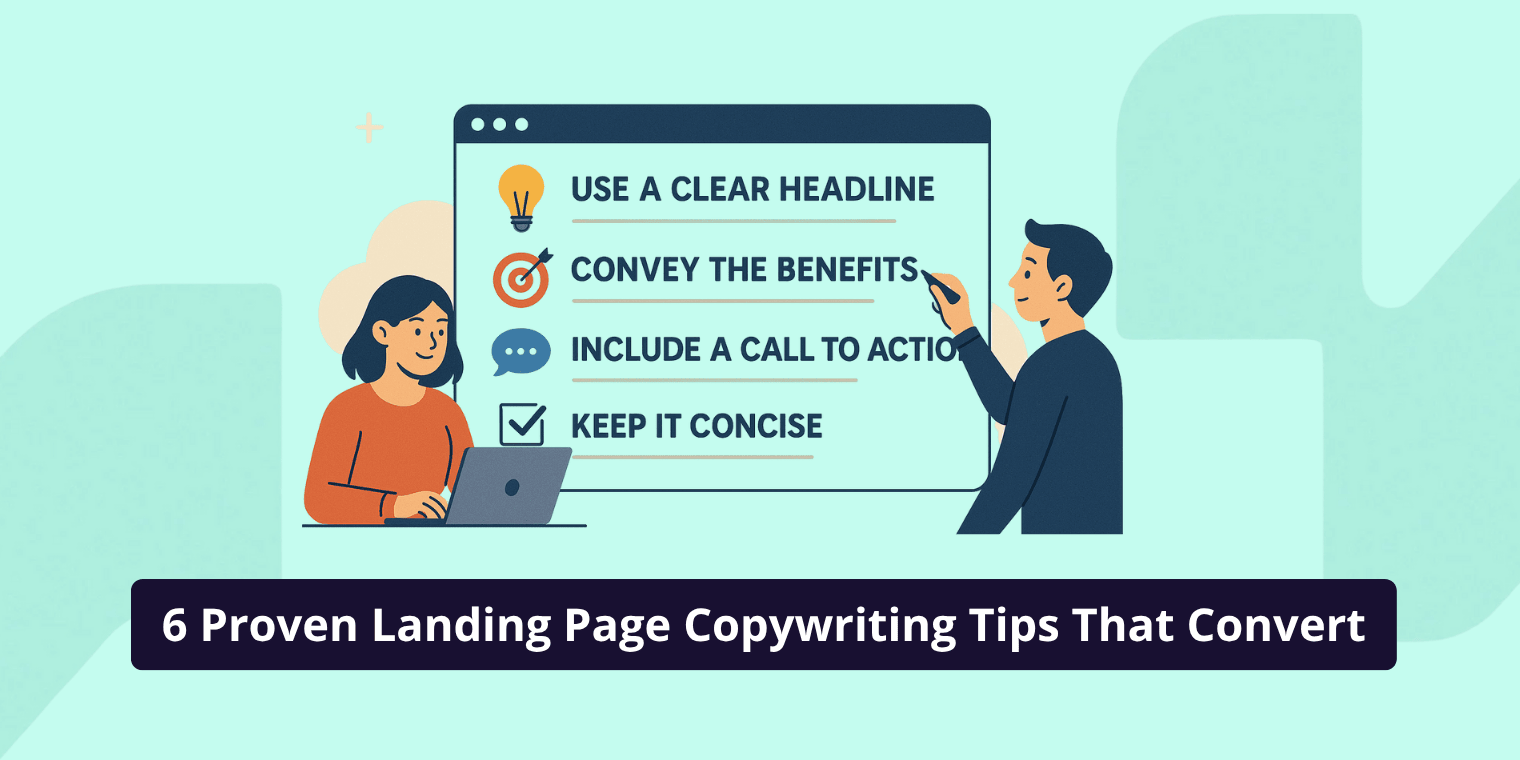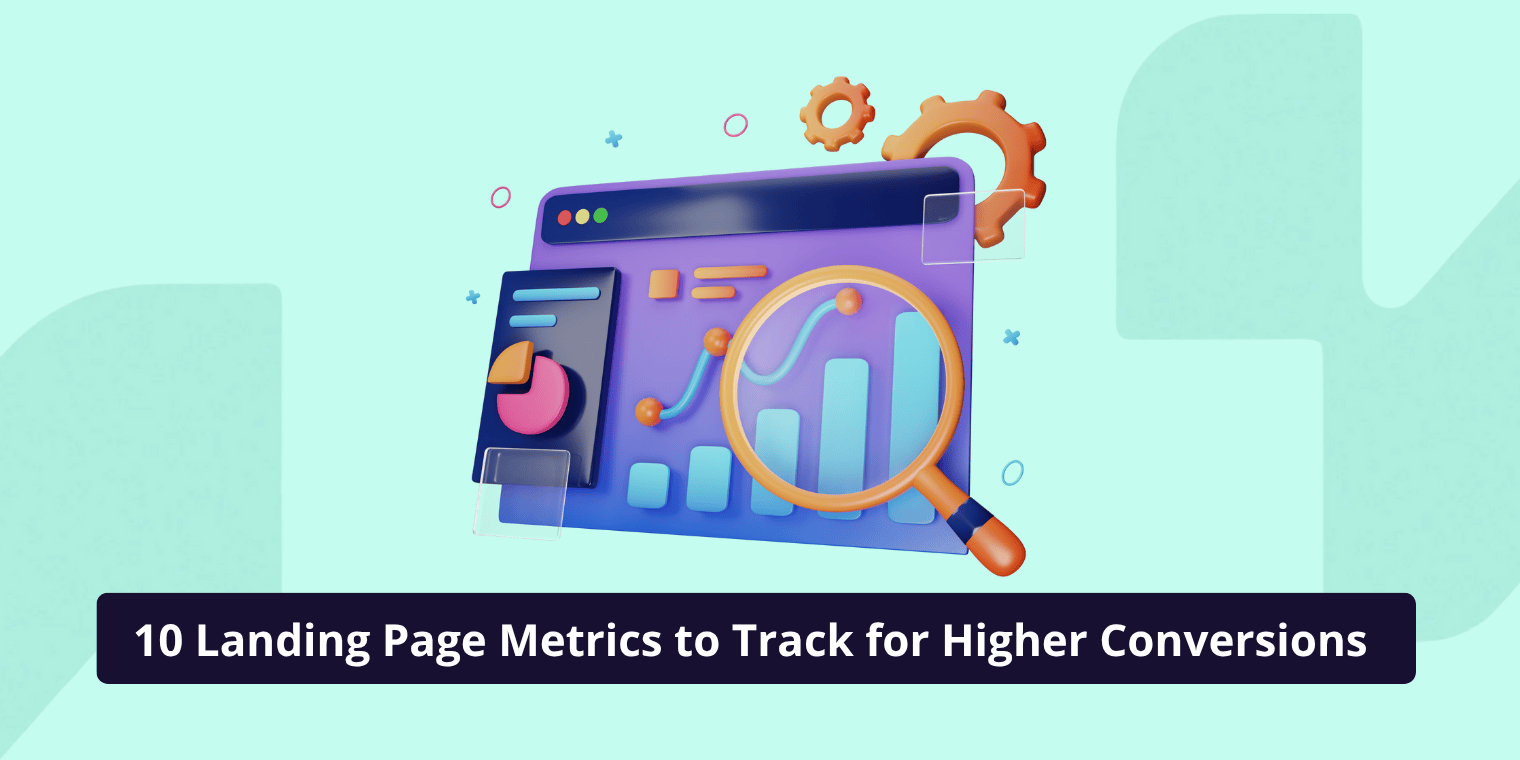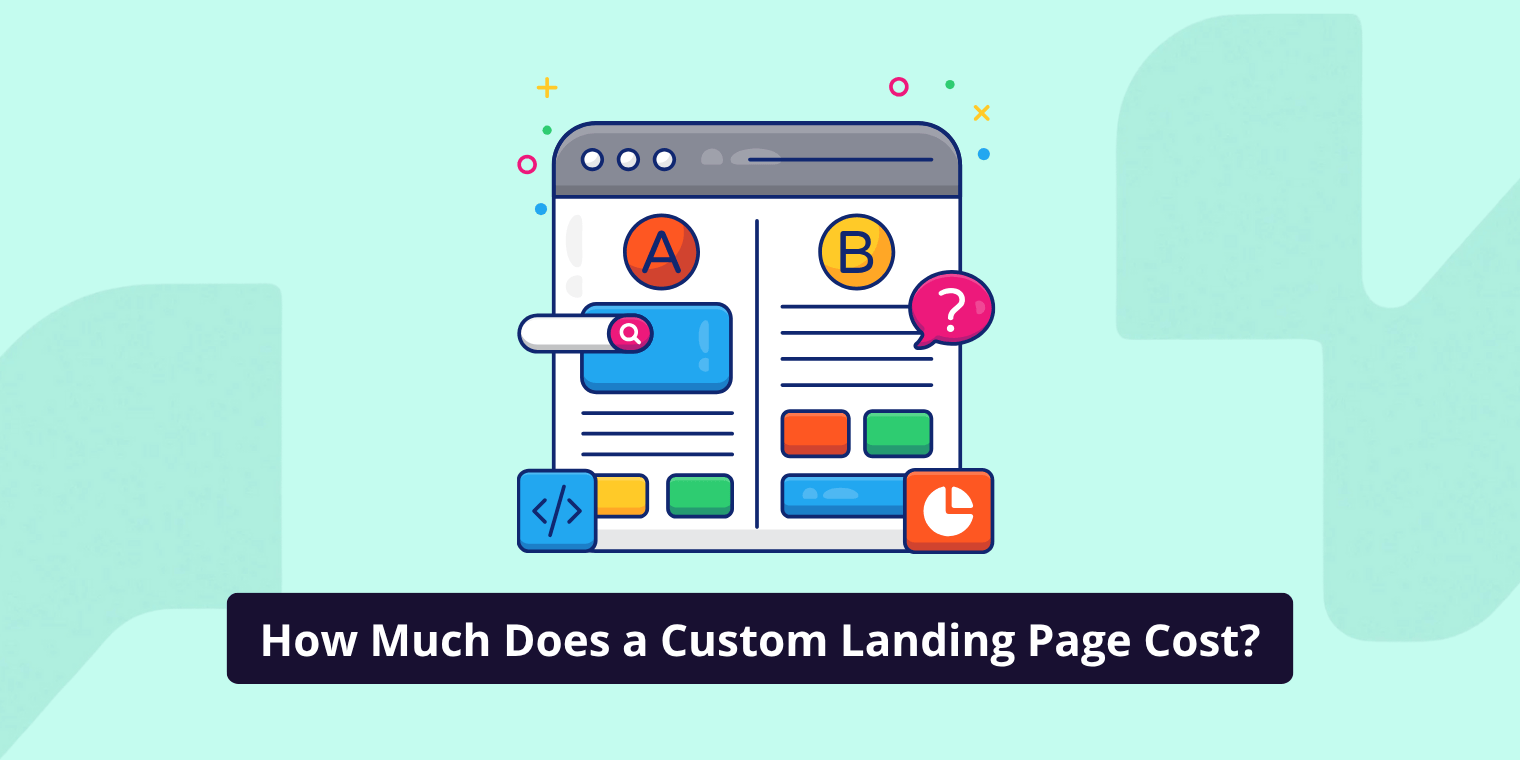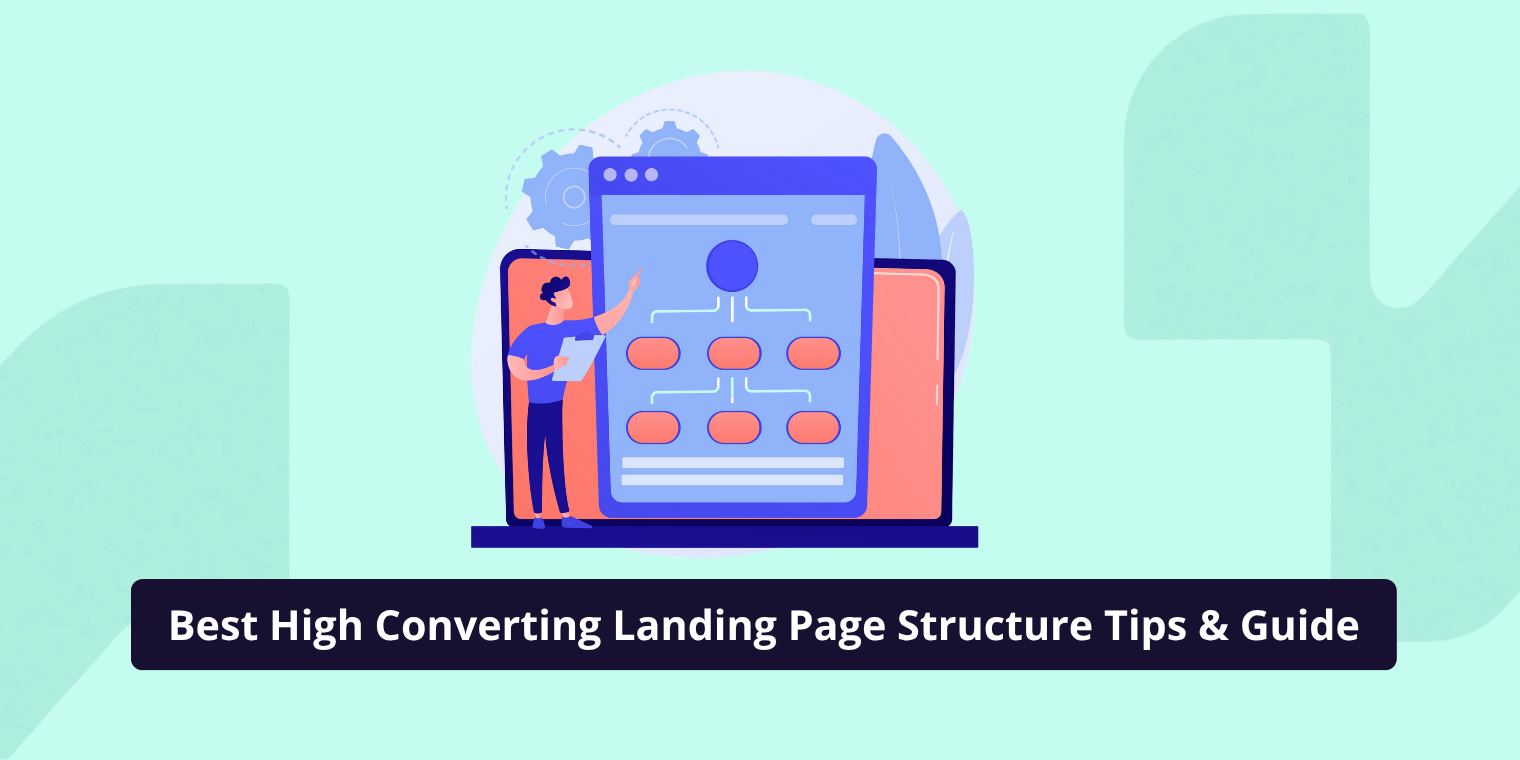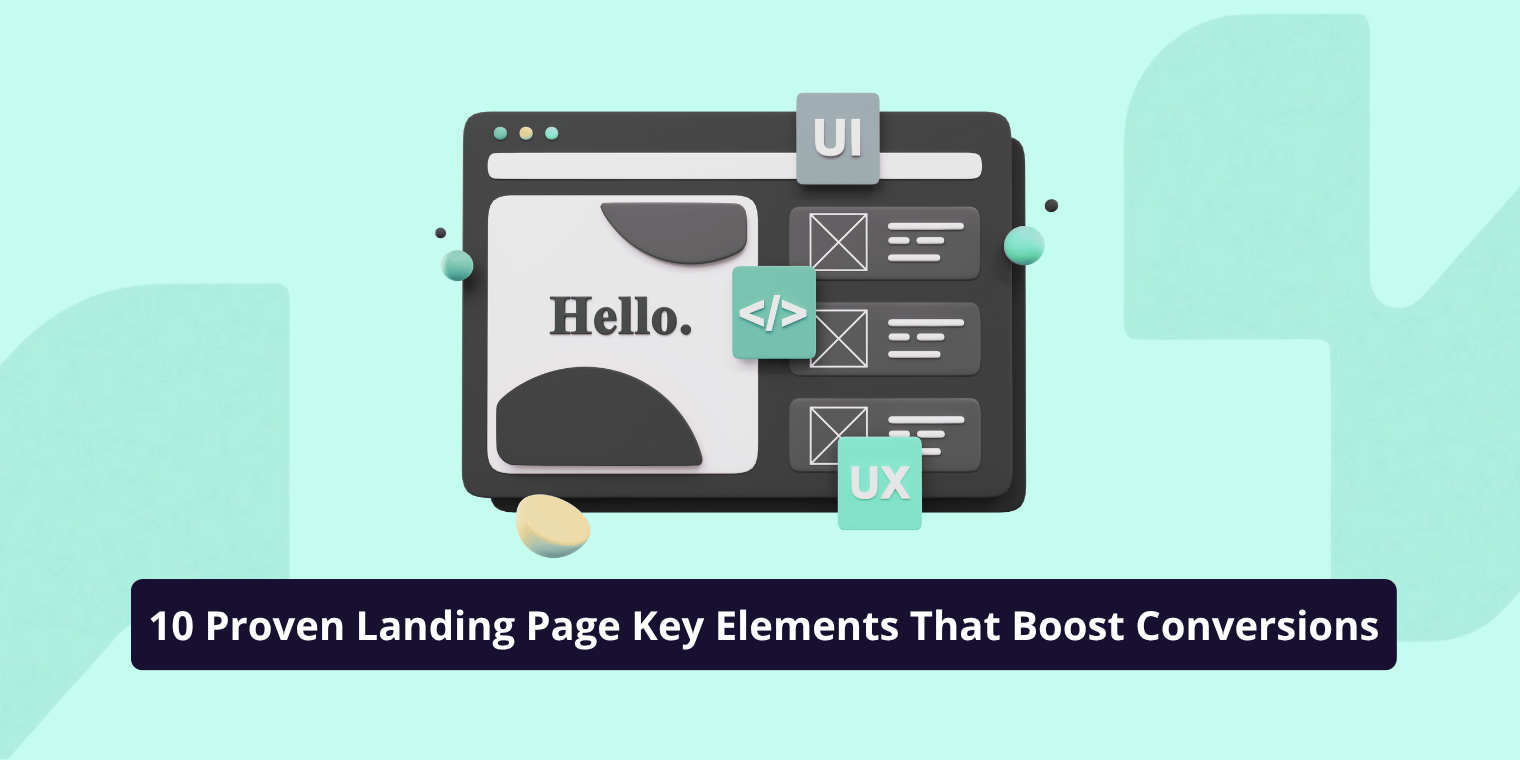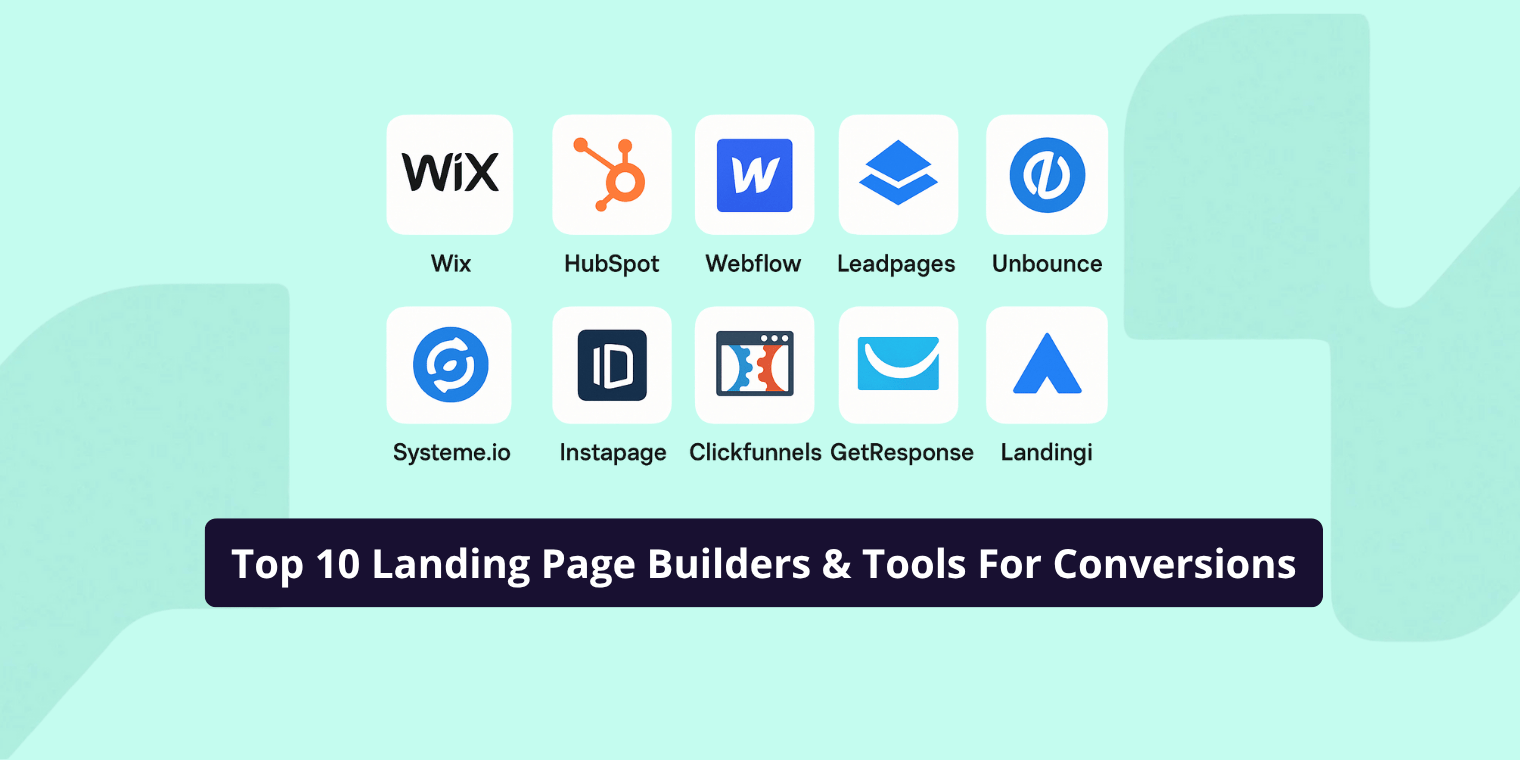A high-converting landing page doesn’t just look good it speaks to your visitors. The words you use can make or break your conversion rate. In this guide, you’ll learn expert-backed landing page copywriting tips that blend psychology, clarity, and persuasion to help you turn more visitors into leads or customers.
What Is Landing Page Copywriting?
Landing page copywriting is the process of writing persuasive text that encourages visitors to take one specific action. That action could be signing up for a free trial, downloading an eBook, booking a consultation, or making a purchase.
Unlike general website content, landing page copy is laser-focused. There’s no fluff, no distraction, and no extra navigation links. Every sentence is designed to pull the reader closer to the goal.
Good landing page copy aligns three critical elements:
- The visitor’s intent — what they came looking for.
- The offer’s value — what they’ll get by taking action.
- The brand’s credibility — why they should trust you.
When these three connect, you create a persuasive flow that feels natural rather than pushy.
In short, landing page copywriting is about clarity, empathy, and direction. It’s about telling the reader exactly what to do and giving them a reason to do it.
What Makes Good Landing Page Copy?
Good landing page copy doesn’t just inform; it inspires action. It helps users see the benefit of your offer and makes taking that next step feel like the easiest choice.
The best copy usually includes a few key ingredients: clarity, empathy, benefit-driven language, and trust elements. Let’s look at how these pieces fit together.
Clarity means being easy to understand. Visitors shouldn’t need to read twice to figure out what you’re offering. Use plain language. Avoid jargon or technical terms unless they’re essential.
Empathy is about writing from your audience’s point of view. If you understand their frustrations and desires, your words will resonate deeply.
Benefits show how your product or service improves the reader’s life. People don’t care about features — they care about results.
And finally, trust builds confidence. Social proof, testimonials, awards, and data points reassure your audience that your promise is credible.
These four principles form the backbone of every great landing page, whether you’re selling a $20 product or a high-end service.
1. Understand Your Audience’s Intent
Before you write a single word, ask yourself: Who am I talking to, and what do they want?
Every successful landing page starts with deep audience research. The more you understand your users, the easier it becomes to write copy that feels personal and persuasive.
If someone lands on your page through a search like “best email marketing tool for small business,” their intent is clear they’re looking for a solution that’s effective, easy to use, and budget-friendly. Your copy should instantly reflect that.
Avoid writing from a brand-first perspective (“Our software is great”). Instead, write from a user-first perspective (“Grow your business faster with simple, automated emails”).
You can uncover intent through keyword research, customer surveys, or tools like Hotjar and Google Analytics. Look at how users behave, what they click on, and what questions they ask.
When your copy mirrors their mindset, conversion becomes effortless.
| User Intent | Example Search Query | Copywriting Approach |
|---|---|---|
| Informational | “How to write a good landing page” | Provide value and education; build trust before selling. |
| Commercial Investigation | “Best landing page software for small business” | Compare benefits and show expertise; add social proof. |
| Transactional | “Buy landing page copywriting service” | Use urgency, credibility, and clear CTAs. |
| Navigational | “Unbounce landing page templates” | Keep copy focused on directing the user to their target resource. |
2. Craft a Compelling Headline
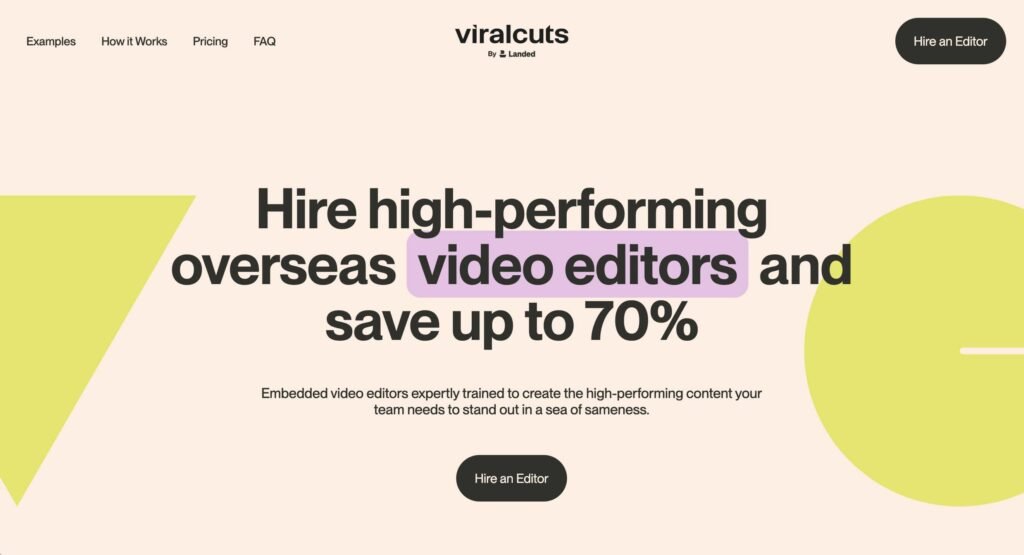
Your headline is your hook the first thing people see and often the only thing they read before deciding whether to continue. A weak headline means instant exit.
A great headline should grab attention, promise value, and connect emotionally. Think of it as a 5-second pitch for your entire offer.
Here’s a simple formula:
[Desired Outcome] + [Timeframe or Simplicity] + [Emotional Trigger]
For example:
- “Double Your Email Signups in Just 7 Days”
- “Finally, a Website Builder That Doesn’t Need a Developer”
Notice how these headlines are not clever; they’re clear. Cleverness makes people think. Clarity makes people click.
Once you have a few headline ideas, test them. A/B testing headlines can lead to huge conversion jumps sometimes as high as 20–30%. Even small wording changes, like swapping “Start Your Free Trial” for “Get My Free Trial,” can make a noticeable difference.
| Weak Headline | Why It Fails | Improved Headline |
|---|---|---|
| “Boost Your Business Fast” | Too vague; doesn’t specify what or how. | “Boost Your Email Signups by 50% in Just 7 Days.” |
| “Try Our App Today” | Generic; lacks benefit. | “Simplify Your Finances with Our Smart Budgeting App.” |
| “We Build Websites” | Brand-focused, not user-focused. | “Get a Conversion-Focused Website That Wins You Clients.” |
3. Focus on Benefits, Not Features
This is one of the golden rules of copywriting: people don’t buy products — they buy outcomes.
Let’s say you’re selling an online course builder.
A feature-focused statement might say:
“Includes 10 GB of cloud storage and customizable templates.”
A benefit-focused statement says:
“Create and launch your course in hours — no coding or tech skills needed.”
See the difference? The second example paints a picture of transformation. It tells the user what they gain.
Here’s a simple trick: after writing any feature, add the phrase “so you can…” and complete the sentence. This forces you to connect the feature to its real-life impact.
The more benefits you highlight (in realistic, honest terms), the more emotionally persuasive your copy becomes.
| Feature | Benefit to User |
|---|---|
| 24/7 Support | Never worry about issues — we’re here whenever you need help. |
| Free Setup | Start immediately without technical hassle or extra cost. |
| Cloud-Based Access | Work from anywhere with complete flexibility. |
| Real-Time Analytics | Make smarter decisions with instant insights. |
4. Use Social Proof to Build Trust

Humans trust humans not brands. That’s why social proof is such a powerful conversion driver.
Testimonials, reviews, client logos, and case studies all serve one purpose: to reduce doubt. When a visitor sees that others have achieved results, they’re more likely to believe your promise.
If you have testimonials, make them specific. “Great service!” doesn’t help. “We increased our sales by 35% within two months of working with them” is much more powerful.
Use visuals whenever possible a photo or company logo beside a review adds credibility.
You can also include trust badges, such as “100% Money-Back Guarantee” or “Trusted by 10,000+ Customers.” These elements subtly reinforce reliability.
Strategically place social proof near your calls-to-action. When visitors are on the verge of clicking, a well-placed testimonial can push them over the line.
| Trust Element | Example | Purpose |
|---|---|---|
| Testimonial | “After working with [Brand], our sales grew 40% in 2 months.” | Adds real-world proof. |
| Client Logos | Display logos like “Trusted by Nike, Spotify, HubSpot” | Establishes authority. |
| Case Study Snapshot | “How we helped a SaaS startup triple signups” | Demonstrates expertise. |
| Certification Badge | “Google Partner” or “SSL Secured” | Enhances trust and credibility. |
5. Optimize Your Call to Action (CTA)
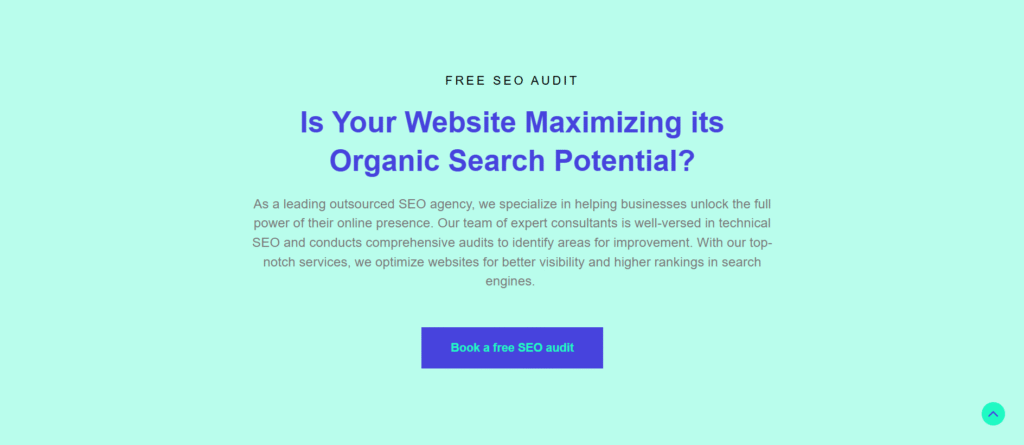
Your CTA is the conversion moment the final push. It’s not just a button; it’s a commitment.
Many landing pages fail because their CTAs are weak or generic. A button that says “Submit” or “Click Here” tells users nothing. Your CTA should make them feel like they’re taking a step toward a solution.
Use action-oriented language that’s personal and specific:
- “Get My Free Demo”
- “Start Saving Now”
- “See My Personalized Plan”
The phrase “my” often performs better than “your” because it makes the user feel ownership over the action.
Color and placement also matter. Your CTA should stand out visually and appear multiple times throughout the page especially after sections that build trust or highlight benefits.
Adding urgency (“Limited Spots Available”) or value (“Free for 14 Days”) can further boost clicks.
Always test variations of your CTAs. Sometimes, the smallest tweak can lead to big improvements.
6. Keep It Scannable and Easy to Read
Even the most persuasive copy will fail if people don’t read it. Online readers skim. They scroll quickly, looking for keywords, bold phrases, and visual cues.
That’s why readability is crucial.
Break your content into short paragraphs ideally two to three sentences each. Use descriptive subheadings so readers can navigate easily. Bold key phrases and use italics for emphasis where needed.
Your goal is to make the text feel light and effortless, not dense and intimidating.
Also, remember that most users will read your page on a mobile device. Make sure your copy adapts beautifully to smaller screens. Test line spacing, paragraph breaks, and CTA button sizes on mobile before publishing.
Good design supports good copy not the other way around.
7. Test, Analyze, and Refine
Copywriting isn’t a one-time effort; it’s an ongoing process. Even the best writers rely on data to refine their message.
Use A/B testing to compare versions of your copy try different headlines, CTA texts, or even value propositions. Tools like Unbounce, Google Optimize, or VWO make it easy.
Analyze metrics like click-through rate, time on page, and conversion rate. If visitors are dropping off early, maybe your headline isn’t engaging enough. If they reach the CTA but don’t click, maybe your offer needs to be clearer or more compelling.
Testing gives you objective feedback. It removes guesswork and helps you evolve your copy over time.
Think of your landing page as a living asset one that improves as you learn from your audience.
| Metric | What It Tells You | If Low, Do This |
|---|---|---|
| Bounce Rate | If people leave quickly, headline or offer may be weak. | Rewrite headline, simplify above-the-fold copy. |
| Click-Through Rate (CTR) | Measures CTA engagement. | Make CTA clearer, change placement or color. |
| Conversion Rate | Shows how many visitors complete your goal. | Test new CTA text, add social proof near CTA. |
| Scroll Depth | Indicates if users read till the end. | Break up long paragraphs, add visual cues. |
Examples of Great Landing Page Copy
Looking at real-world examples can help you understand how top brands use copy to drive conversions.
Dropbox keeps it simple. Its old headline, “Your files, anywhere,” said everything in three words. It focused on user benefit, not product details.
Shopify uses direct CTAs like “Start your free trial” clear, no-nonsense, and impossible to misinterpret.
Grammarly taps into emotion with its headline: “Write with confidence.” It doesn’t explain how the tool works it focuses on the result users want to feel.
Each of these examples works because they understand one thing: clarity beats creativity when it comes to conversions.
Common Copywriting Mistakes to Avoid
Even experienced writers fall into common traps that hurt conversions.
Avoid these if you want your copy to work effectively:
- Talking about yourself too much. Visitors care about what you can do for them, not about your company’s history.
- Using vague or complex language. Keep it simple. People shouldn’t have to think twice to understand your message.
- Weak CTAs. “Submit” is not inspiring. “Get My Free Guide” is.
- Ignoring objections. If users might worry about cost or credibility, address those concerns directly.
- Neglecting mobile optimization. If your copy breaks on mobile, you lose half your audience instantly.
The best way to find these issues is to read your copy out loud. If it doesn’t sound natural, it won’t convert.
Best Tools for Landing Page Copywriting
Technology can make your job easier. Here are a few tools professional copywriters use daily:
- Grammarly – Perfects your grammar and tone.
- Hemingway Editor – Simplifies complex sentences for better readability.
- Copy.ai or Jasper – AI tools that help brainstorm ideas and structure.
- Hotjar – Shows how users interact with your page through heatmaps.
- Unbounce – Allows A/B testing of landing pages without coding.
Use these tools to polish your writing and measure how well your copy performs.
When to Hire a Professional Copywriter
If your landing page isn’t converting, even after tweaks, it might be time to bring in a professional.
A skilled conversion copywriter does more than write words they understand psychology, data, and design. They’ll identify where users drop off, uncover why, and rewrite copy that aligns with your business goals.
Look for writers who specialize in conversion rate optimization (CRO) and can show measurable results. Ask for examples of before-and-after performance improvements.
Remember, professional copywriting is an investment not an expense. The right copy can multiply your revenue many times over.
Landing Page Copywriting Master Checklist
1. Research & Strategy
✅ Identify your primary audience segment and their pain points.
✅ Define the main goal of your landing page (lead generation, sign-up, purchase, etc.).
✅ Research competitor landing pages note their tone, offer, and CTA placement.
✅ Conduct keyword and intent analysis to align copy with searcher expectations.
✅ Collect testimonials, stats, or proof elements to include for trust building.
2. Crafting the Headline & Subheadline
✅ Write a headline that clearly conveys the main benefit or promise.
✅ Ensure it passes the 4U test Useful, Urgent, Unique, Ultra-specific.
✅ Add a supporting subheadline that expands on the benefit or addresses pain.
✅ Use power words (without sounding clickbait-y).
✅ Test at least 2 headline variations using A/B testing tools.
3. Writing the Core Copy
✅ Start with an empathetic opening addressing a key pain point or desire.
✅ Transition smoothly from problem → solution → benefit.
✅ Focus 80% on benefits, 20% on features.
✅ Use short paragraphs, bullet points, and bold highlights for readability.
✅ Include emotional triggers like FOMO, relief, security, or aspiration.
✅ Keep the tone consistent with your brand voice (friendly, expert, or authoritative).
4. Building Credibility
✅ Add at least one testimonial with name, photo, and result if possible.
✅ Include logos of brands/clients you’ve worked with.
✅ Highlight awards, certifications, or guarantees.
✅ Insert trust badges near CTA (SSL, refund policy, verified, etc.).
✅ If B2B: link to case studies or whitepapers for proof of results.
5. Crafting a Powerful CTA (Call-to-Action)
✅ Place a primary CTA above the fold and repeat it after key sections.
✅ Make CTA text benefit-driven (“Get My Free Audit” instead of “Submit”).
✅ Use contrasting color and enough white space around the CTA button.
✅ Add a secondary CTA (soft conversion) — like “Learn More” or “Download Guide.”
✅ Test different CTA placements, texts, and button designs.
6. Page Structure & Design
✅ Keep only one goal per page no unnecessary links or distractions.
✅ Use visual hierarchy (headings, whitespace, and bullet formatting).
✅ Add visuals that support the copy (not just decorative).
✅ Optimize for mobile readability no cropped text or broken layouts.
✅ Ensure fast page load (under 3 seconds).
✅ Add a scroll-to-top button for longer pages.
7. Testing, Optimization & Analytics
✅ Use A/B testing tools (e.g., Google Optimize, VWO) to test versions.
✅ Track bounce rate, CTR, and conversion rate.
✅ Use heatmaps (Hotjar, Microsoft Clarity) to see user scroll behavior.
✅ Monitor form drop-off rate shorten forms if conversion is low.
✅ Review mobile vs desktop conversions and optimize accordingly.
✅ Update copy regularly based on analytics + user feedback.
8. SEO & Accessibility Check
✅ Use your primary keyword in H1, URL, meta title, and description.
✅ Add semantic keywords (LSI terms) naturally throughout.
✅ Optimize image alt texts and compress large files.
✅ Ensure heading hierarchy (H1 → H2 → H3) is logical.
✅ Add internal links to related articles or services.
✅ Write a meta description under 155 characters with a clear CTA.
✅ Test page for accessibility contrast, alt text, and keyboard navigation.
9. Post-Launch Maintenance
✅ Review performance every 2–4 weeks.
✅ Keep testimonials, stats, and offers up to date.
✅ Refresh headlines or CTAs every 3–6 months.
✅ Collect new user feedback or run periodic UX tests.
✅ Maintain consistent brand tone and conversion goals across campaigns.
Key Takeaways
Your headline decides your bounce rate make it benefit-driven and instantly clear.
Write for emotion first, optimization second. Readers act when they feel understood.
Use one core message per page clarity outperforms creativity every time.
Social proof is not optional. Add testimonials, trust badges, and guarantees.
CTAs must be visible, specific, and repeated strategically.
Mobile experience is part of copywriting. Readability and load speed affect conversion.
Use A/B testing and heatmaps to refine your copy continuously.
Always end with a conversion-friendly element a CTA, checklist, or lead magnet.
FAQ’S
1. How do I write a good landing page copy?
A good landing page copy clearly communicates the offer, focuses on benefits, and ends with a strong call-to-action. Start with a powerful headline, use emotional triggers, keep paragraphs short, and write as if speaking directly to your target audience. Use social proof and urgency to motivate action.
2. What are the 4 C’s of copywriting?
The 4 C’s of copywriting are Clear, Concise, Compelling, and Credible.
Your message should be easy to understand, to the point, persuasive enough to inspire action, and trustworthy to build confidence in your brand or offer.
3. What is the 80/20 rule in copywriting?
The 80/20 rule in copywriting means 80% of results come from 20% of your copy usually the headline, subheadline, and call-to-action.
Focus your time on these critical areas to maximize engagement and conversions.
4. What is the KISS formula for copywriting?
The KISS formula stands for “Keep It Simple, Stupid.”
It reminds copywriters to write clear, direct, and easy-to-read copy instead of overcomplicating language.
Simple messages perform better because users understand and act faster.
5. What are the 4 Ps of copywriting?
The 4 Ps of copywriting are Promise, Picture, Proof, and Push.
You start by promising a benefit, paint a vivid picture of the outcome, provide proof like testimonials, and push the reader to take immediate action with a CTA.
6. What is the best copywriting formula?
The best copywriting formula for landing pages is AIDA Attention, Interest, Desire, Action.
It helps structure persuasive copy that captures attention, builds desire, and drives the user toward conversion.
